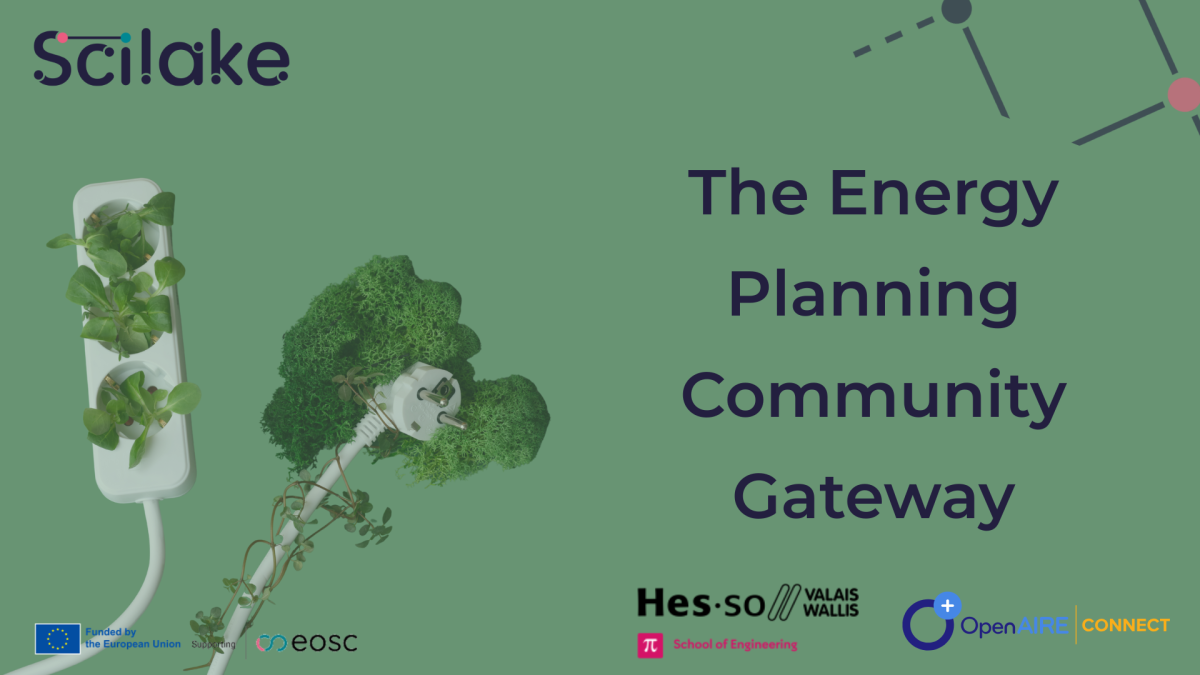Configuring a Community Gateway for Energy Research with OpenAIRE
The SciLake project team recently presented at the OpenAIRE Connect Community Call, showcasing the Energy Pilot's work on configuring OpenAIRE gateways. This blog post summarizes key insights from Thanasis Vergoulis and Andrea Salmi's presentation on how domain experts can leverage OpenAIRE Connect to define relevant subgraphs for their research communities.

SciLake and OpenAIRE: Building Custom Gateways for Research Communities
Thanasis Vergoulis (ARC) opened the presentation by introducing the SciLake project and explaining how OpenAIRE Connect enables domain experts to identify which parts of the OpenAIRE graph are most relevant to their specific research domains. The platform allows researchers to define and extract subgraphs that are particularly interesting or useful to their communities.
The SciLake Energy Pilot: An Iterative Configuration Approach
Andrea Salmi (HES-SO) presented the Energy Pilot's experience with configuring OpenAIRE gateways. The team adopted an iterative approach to refine their gateway configuration, testing how different criteria affected their results.
- Initial approach: Connected publications with specific projects (e.g. ENERMAPS), yielding only a few thousand results.
- Expansion phase: Added journals and selected specific journal subjects and communities, which significantly increased results to several million.
- Refinement challenge: An attempt to use advanced criteria unintentionally increased results further due to overlapping subjects.
- Successful narrowing: Removed redundant subjects and added more context in advanced criteria, helping to focus results.
- Final optimization: Implemented intensive configurations using approximately 100 carefully selected keywords for power/energy topics to achieve more precise results.
Key Findings and Recommendations
Based on their experience, the Energy Pilot team offered several valuable insights:
- Accept some noise: It's practically impossible to create a perfectly defined gateway with zero noise. The goal should be to reduce noise as much as possible while maintaining useful coverage.
- Purpose-driven configuration: Gateway configuration should align with intended use cases—whether that requires higher precision or broader coverage, particularly for transdisciplinary research.
- Technical improvements: Several suggestions were made to enhance the OpenAIRE Connect platform:
- Streamline the process for configuring advanced criteria, possibly with table-based inputs or batch operations
- Provide direct feedback on how different choices impact gateway results
- Improve journal inputs, as many selected journals had minimal outputs
- Enhance data source integration, as certain sources introduced noise while others offered minimal metadata
- Clarify how the relevance algorithm works to help users understand result ordering
- Implement notification systems to notify gateway managers about updates
The Energy Pilot's experience demonstrates that configuring OpenAIRE gateways is an iterative process that requires careful balancing of breadth and specificity. By sharing these insights, the SciLake team hopes to help other research communities more effectively leverage OpenAIRE Connect to create tailored research environments.